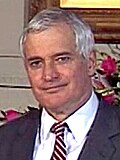
Back Kanadische Unterhauswahl 1988 German Elecciones federales de Canadá de 1988 Spanish Élections fédérales canadiennes de 1988 French Elezioni federali in Canada del 1988 Italian 1988년 캐나다 연방 선거 Korean Канадские федеральные выборы (1988) Russian 1988 Canadian federal election SIMPLE 1988年加拿大联邦大选 Chinese
| |||||||||||||||||||||||||||||||||||||||||||||||||||||
295 seats in the House of Commons 148 seats needed for a majority | |||||||||||||||||||||||||||||||||||||||||||||||||||||
|---|---|---|---|---|---|---|---|---|---|---|---|---|---|---|---|---|---|---|---|---|---|---|---|---|---|---|---|---|---|---|---|---|---|---|---|---|---|---|---|---|---|---|---|---|---|---|---|---|---|---|---|---|---|
| Opinion polls | |||||||||||||||||||||||||||||||||||||||||||||||||||||
| Turnout | 75.3%[1]
( | ||||||||||||||||||||||||||||||||||||||||||||||||||||
| |||||||||||||||||||||||||||||||||||||||||||||||||||||
 The Canadian parliament after the 1988 election | |||||||||||||||||||||||||||||||||||||||||||||||||||||
| |||||||||||||||||||||||||||||||||||||||||||||||||||||
The 1988 Canadian federal election was held on November 21, 1988, to elect members to the House of Commons of Canada of the 34th Parliament of Canada. It was an election largely fought on a single issue: the Canada–United States Free Trade Agreement (CUSFTA); the Progressive Conservative Party campaigned in favour of it, whereas the Liberal Party and the New Democratic Party (NDP) campaigned against it.
The incumbent prime minister, Brian Mulroney, led his Progressive Conservative Party to a second majority government. Mulroney was the party's first leader since John A. Macdonald to win a second majority government.[b]
The Liberal Party experienced a recovery after its 1984 wipeout, more than doubling its seat count. The New Democratic Party won its largest number of seats up to the time (they would beat the 1988 record in 2011).
The election was the last won by the Progressive Conservatives, the last until 2011 in which a right-of-centre party formed a majority government, and the last where a right-of-centre party won the most seats in Quebec. It was also the last election in Canadian history in which only three parties would be elected to Parliament. With Mulroney winning a majority, the agreement was passed into law, even though a majority of the voters had voted for parties opposing free trade.[2]
- ^ "Voter Turnout at Federal Elections and Referendums". Elections Canada. 21 November 1988. Archived from the original on September 4, 2024. Retrieved January 11, 2014.
- ^ ""The New Life of Brian Mulroney". The Walrus, Ira Wells, Apr. 19, 2018".
{{cite journal}}: Cite journal requires|journal=(help)
Cite error: There are <ref group=lower-alpha> tags or {{efn}} templates on this page, but the references will not show without a {{reflist|group=lower-alpha}} template or {{notelist}} template (see the help page).




